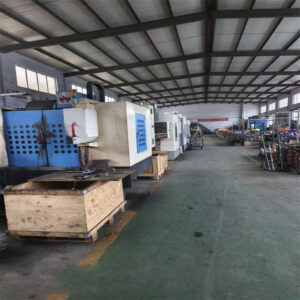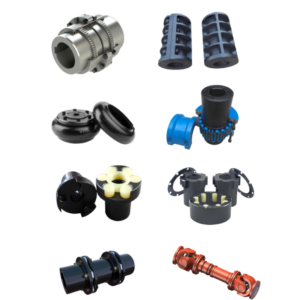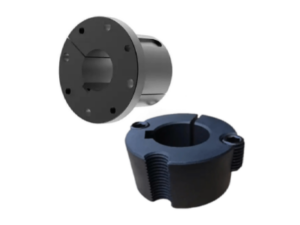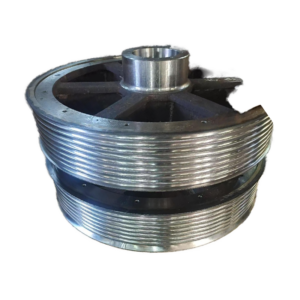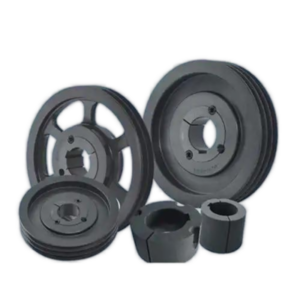Electric motors are highly diverse and can be classified based on their operating principles, construction, power source types, and application scenarios. Below are the main motor types and their core technical distinctions:
I. Major Motor Classifications
1. DC Motors
- Brushed DC Motors: Traditional, relatively simple structure. Use brushes and a commutator to reverse current direction for continuous rotation. Low cost, high starting torque, relatively simple speed control.
- Permanent Magnet DC Motors (PMDC): Use permanent magnets for stator excitation. Higher efficiency, relatively compact size.
- Separately/Shunt/Series/Compound Wound DC Motors: Stator excited by electromagnets. Different winding configurations lead to significantly different characteristics (e.g., torque-speed curves), suited for specific applications (e.g., series wound for traction).
- Brushless DC Motors (BLDC): Essentially a special drive mode (trapezoidal/six-step commutation) of Permanent Magnet Synchronous Motors (PMSM). Eliminate brushes and commutator, using an electronic controller to switch stator winding current based on rotor position. High efficiency, long life, low noise, minimal maintenance, high power density. Widely used in drones, PC fans, power tools, EV auxiliary systems.
2. AC Motors
- Asynchronous Motors (Induction Motors – IM)
- Squirrel Cage Induction Motors (SCIM): Rotor consists of shorted conductive bars (resembling a squirrel cage). Extremely simple, robust, reliable, low-cost, easy maintenance. Relatively low starting torque, speed control requires a variable frequency drive (VFD). The dominant motor type in industry (>80%), e.g., pumps, fans, compressors, conveyors.
- Wound Rotor Induction Motors (WRIM): Rotor windings connected to external resistors or controllers via slip rings. High starting torque, better speed control capability than SCIM (via rotor resistance control or cascade control), but more complex, costly, higher maintenance (slip rings/brushes). Used for high-starting-torque & limited speed control applications, e.g., cranes, large compressors.
- Synchronous Motors (SM)
- Wound Field Synchronous Motors (WFSM): Rotor has DC field winding supplied via slip rings. Speed strictly synchronized to supply frequency. Power factor adjustable (can operate leading to compensate grid VARs). High efficiency, stable operation, but complex structure, high cost, requires excitation system. Primarily used in large generators, high-power constant-speed drives (e.g., compressors), applications requiring precise speed or power factor correction.
- Permanent Magnet Synchronous Motors (PMSM): Rotor excited by permanent magnets. Very high efficiency, high power density, high torque density, fast dynamic response, relatively simpler structure than WFSM (no slip rings/brushes). Require VFD for speed control. The mainstream choice for high-performance drives and electric vehicle traction motors. Classified by back-EMF waveform: Sinusoidal PMSM (common) and BLDC (Trapezoidal).
- Reluctance Synchronous Motors: Rotor has no magnets or windings, utilizes rotor saliency and principle of minimum reluctance to produce torque. Simple, robust, low cost, good high-speed performance, high temperature tolerance. Higher torque ripple, lower power factor and efficiency typically compared to PMSM. Main types:
- Switched Reluctance Motors (SRM): Salient poles on both stator and rotor, stator concentrated windings, require specialized controller. High torque ripple & noise, but simple, reliable, low cost. Suitable for high-speed or harsh environments (e.g., appliances, industrial fans, some EVs).
- Synchronous Reluctance Motors (SynRM): Rotor has specially designed flux barriers, stator typically uses distributed windings (like IM). Lower torque ripple and noise than SRM, higher efficiency (though less than PMSM). Strong competitor to high-efficiency IMs (e.g., IE5 ultra-premium efficiency class).
3. Special / Other Motor Types
- Stepper Motors: Convert electrical pulse signals into precise angular displacement (step angle). Can achieve precise position control with open-loop control. Simple structure, easy control, good positioning accuracy (no cumulative error), high low-speed torque. Low efficiency, poor high-speed performance, potential for missed steps. Widely used in printers, scanners, CNC machines, robotic joints requiring precise positioning.
- Servo Motors:Not a motor structure, but a system concept. Refers to a motor system paired with feedback devices (encoder/resolver) and a dedicated servo drive, enabling precise closed-loop control of position, speed, and torque. The core motor is typically:
- AC Permanent Magnet Synchronous Servo Motor: Most common, high performance.
- Brushless DC Servo Motor: Performance similar to PMSM.
- AC Induction Servo Motor: Used for high-power applications.
- Linear Motors: “Unrolled” version of a rotary motor, producing linear thrust. No mechanical transmission, enabling high speed, precision, and responsiveness. Used in high-speed trains (maglev), precision machine tools, semiconductor equipment, automated logistics.
- Single-Phase Induction Motors: Induction motors powered by single-phase AC. Require auxiliary starting mechanisms (capacitor start/capacitor run/shaded pole). Lower power, lower efficiency. Extensively used in household appliances (refrigerators, AC units, washing machines, fans), small pumps, power tools.
II. Core Technical Differences Comparison
The table below summarizes the key characteristic differences among major motor types:
| Characteristic | Brushed DC Motor | Brushless DC Motor (BLDC) | Squirrel Cage IM (SCIM) | Permanent Magnet SM (PMSM) | Switched Reluctance Motor (SRM) | Stepper Motor |
|---|---|---|---|---|---|---|
| Operating Principle | Brush Commutation | Electronic Commutation | Electromagnetic Induction | Magnetic Synchronization | Minimum Reluctance Principle | Pulse Stepping |
| Speed Control Method | Armature Voltage/Field | PWM VFD Control | VFD Control | VFD Control | PWM VFD Control | Pulse Frequency |
| Efficiency | Low-Medium | High | Medium-High (IE3/4) | Very High | Medium-High | Low |
| Power/Torque Density | Medium | High | Medium | Very High | Medium-High | Medium-High (Low Speed) |
| Starting Torque | Very High | High | Medium (Standard) | High | Very High | Very High (Static) |
| Control Complexity | Simple | Medium (Req. Controller) | Simple (VFD Complex) | Complex (Req. Controller + Feedback) | Complex (Req. Special Controller) | Simple (Open Loop) |
| Speed Precision | Medium | High (Closed Loop) | Low (Open Loop) / High (Closed Loop) | Very High (Closed Loop) | High (Closed Loop) | Medium (Open Loop) / High (Closed Loop) |
| Position Control | Poor | Good (Req. Closed Loop) | Poor | Excellent (Req. Closed Loop) | Good (Req. Closed Loop) | Good (Open Loop) |
| Maintenance Needs | High (Brush/Commutator Wear) | Very Low (Brushless) | Very Low | Low | Very Low | Low |
| Noise & Vibration | Medium-High (Brush Sparking) | Low | Low-Medium | Low | High (Torque Ripple) | Medium-High |
| Cost | Low | Medium-High | Low | High | Medium | Low |
| Primary Applications | Low-cost speed control, Toys, Starters | Power Tools, Fans, Drones, EV Auxiliary | Industrial Pumps, Fans, Compressors, Conveyors | EV Traction, Servo Systems, Precision Machining | High-Speed Apps, Harsh Env., Appliances, Some EVs | Precision Positioning, Printers, Small Automation |
Detailed Explanation of Key Technical Differences
- Excitation Method:
- Electromagnetic Excitation: Requires external power to energize rotor or stator field windings (e.g., traditional DC, WFSM). Adds complexity and energy consumption.
- Permanent Magnet Excitation: Uses high-performance permanent magnets (e.g., NdFeB) to provide the field (e.g., PMDC, BLDC, PMSM). High efficiency, high power density, but cost impacted by rare-earth materials, risk of high-temperature demagnetization.
- Induced Excitation: Rotor field induced by stator current (Induction Motors). No separate excitation or magnets needed, simple and reliable structure.
- Reluctance Based: Torque generated by exploiting rotor saliency and magnetic reluctance variation (SRM, SynRM). No magnets, lower cost, high temperature tolerance.
- Commutation Method:
- Mechanical Commutation: Relies on brushes and commutator (Brushed DC). Causes sparking, noise, wear, limits speed and lifespan.
- Electronic Commutation: Achieved via semiconductor power devices and controllers (BLDC, all AC motors requiring VFDs). No sparking, low noise, long life, enables high-performance control.
- Speed Characteristics:
- Synchronous Speed: Speed strictly equals synchronous speed determined by supply frequency (All SMs). High speed accuracy and stability.
- Asynchronous Speed: Speed slightly less than synchronous speed (has slip) (IMs). Speed varies with load, poor open-loop speed regulation.
- Independent Speed: Speed determined by control signal (DC motors, all inverter-fed motors). Wide speed range, high flexibility.
- Control Dimensions & Performance:
- Open-Loop Control: E.g., simple DC speed control, constant-speed IM, open-loop steppers. Low cost but limited precision and dynamic response.
- Closed-Loop Control: Requires sensor feedback (speed, position, current).
- Speed Control: E.g., VFD-driven fans/pumps.
- Torque Control: E.g., tension control, direct torque control (DTC).
- Position Control: E.g., servo systems, closed-loop steppers. Achieves high precision, high dynamic response, high robustness.
- Efficiency & Power Density:
- PMSM: Typically highest efficiency (especially at partial load), highest power/torque density.
- High-Efficiency IM: Efficiency approaches PMSM (achieved via optimized design like copper rotor, SynRM technology for IE4/IE5).
- SRM: Good efficiency, relatively high power density, especially at high speeds.
- Brushed DC / Standard IM / Stepper: Relatively lower efficiency.
- Cost & Maintenance:
- SCIM: Simplest structure, lowest cost, minimal maintenance requirements.
- Brushed DC: Low cost, but brushes/commutator require periodic maintenance/replacement.
- PMSM/BLDC: Higher motor cost (magnets), though controller cost decreasing. Low maintenance needs.
- Servo/Stepper Systems: High system cost (motor + drive + feedback), relatively complex maintenance.
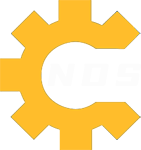
-1-300x240.jpg)
